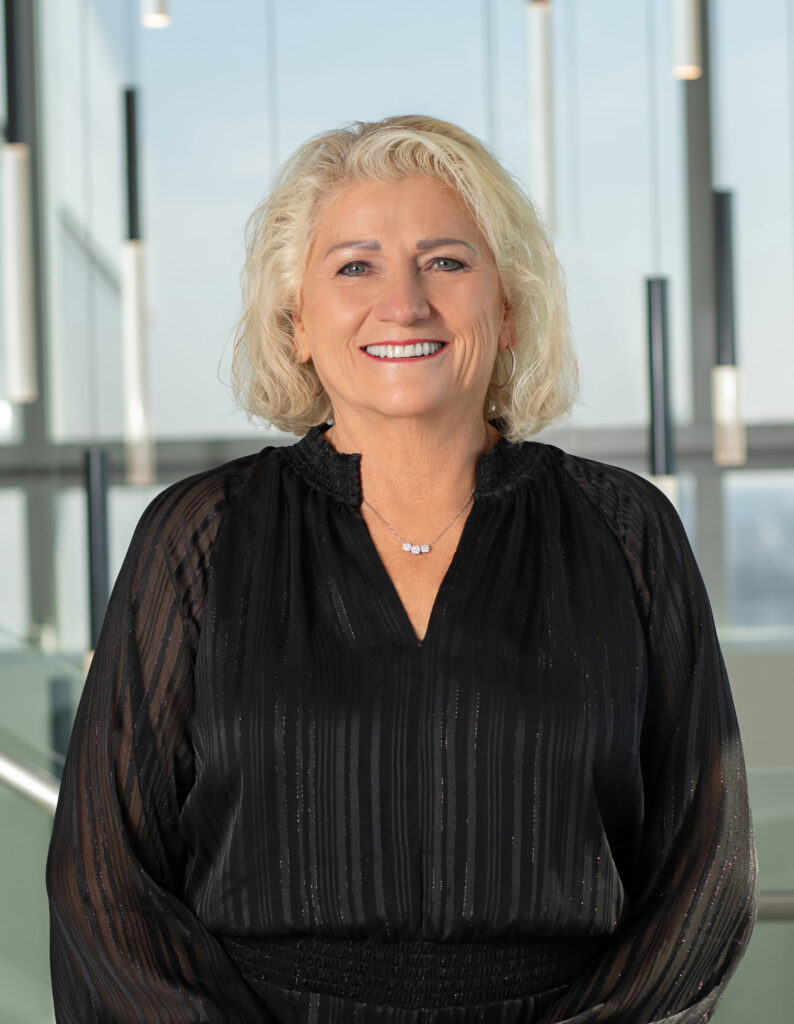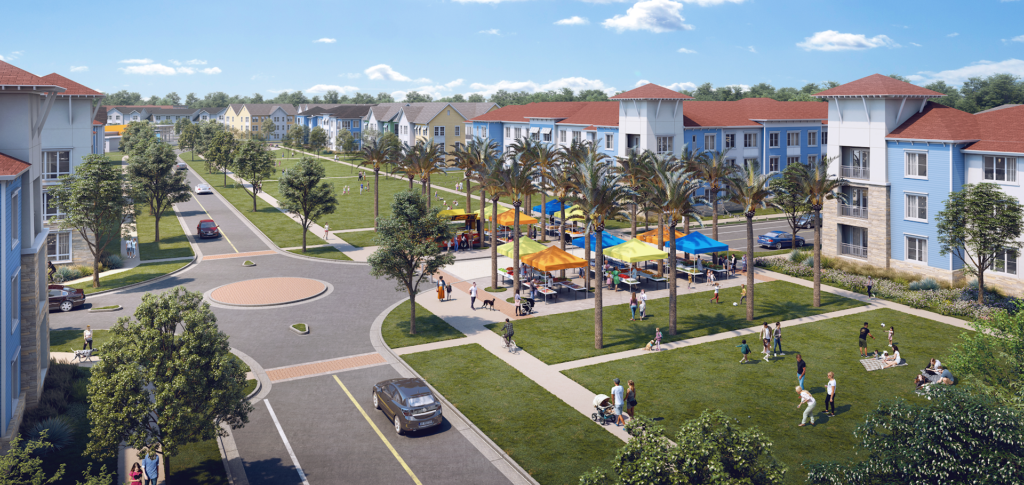A “Solution-Oriented” Approach to Today’s Housing Problems
The Michaels Organization Addresses Attainable Housing

By Abram Mamet
8 min read
The Michaels Organization has a history of identifying problems and forging ahead with bold solutions. Founded in 1973 by Michael J. Levitt, the company was, from the outset, a “solution-oriented developer,” says Milton Pratt, who serves as Michaels’ executive vice president for development. With a mission towards identifying problems and crafting holistic and integrated solutions, those early days were geared towards engaging with every available resource—particularly the Section 8 program—to respond to a then-burgeoning rental housing crisis.

Primed with industry knowledge, Michaels was able to embrace the Low Income Housing Tax Credit program when it rolled out in 1986, setting the foundation for a future that would see the organization become the largest privately-held owner of affordable housing.
Though Michaels could have easily remained a LIHTC-exclusive company, other unaddressed needs in the housing industry were becoming urgent. One significant problem was that of military housing, which was privatized in 1996 with the idea of improving the living conditions of service members. “Over time, we saw that there was another need, and that was in military housing,” says Pratt. “The private-public partnership with the Department of Defense provided the solution for creating state-of-the-art housing for military personnel and their families.”

Years later, The Michaels Organization started noticing the same gaping housing need at universities, says Pratt. “Problem: universities have a shortage of housing. Solution: creating housing for those young people that offers a living-learning environment that leads to success.”
These pivots have proven to be fortuitous, as the LIHTC landscape continues to present fresh challenges to developers. “It’s become exceedingly difficult to build tax credit projects,” says Bruce Morgan, Michaels’ senior vice president of development. Only 20 years ago, nearly every decent deal was getting funding via the tax credit. “Nowadays, it’s typically four deals that are submitted for every one that’s approved and funded. That’s a risky and expensive proposition.”

Michaels eventually developed robust, integrated areas of expertise, with their military and student housing coexisting with the more traditional affordable and market-rate segments. These natural directions of growth have continued to strengthen the organization, says Kimberlee Schreiber, president of Michaels Management. “As the company has grown and there have been opportunities, we have simply taken our knowledge and our expertise, and we’ve added more depth and more layers to our team.”
Charting A New Course into Attainable Housing
Recently, Michaels has been pivoting towards adding yet another wing to their development practices: Attainable Housing. Meant to address ‘missing-middle’ workforce housing, Michaels pursues these Attainable Housing developments to provide housing in areas where rents might be so expensive that individuals who are eligible for traditional housing subsidies are priced out of the communities where they work.
This has led to creative partnerships with a diverse group of entities, some public and some private, such as Disney, a West Coast Florida Hospital and the Yampa Valley Housing Authority. Though each entity has unique characteristics and major differences, places with a deep need for Attainable Housing all share a common thread, says Morgan. “Every one of these communities is suffering from their success. These communities are all beautiful for different reasons and are all lovely places to live. When housing costs rise rapidly, key contributors to a vibrant and diverse community can easily become priced out, making it difficult for them to find housing close to where they work.

Schreiber points out that in these Attainable Housing deals, Michaels focuses on partners “that are as mission-driven as we are.” To work, these deals must focus on strengthening communities by addressing urgent housing needs, rather than turning around apartments for a quick profit.
Even though each deal is unique, Michaels’ overall Attainable Housing strategy focuses on ways to reduce costs, including land donations, tax abatements or help with infrastructure. “The value of the land is the crux of the problem,” says Morgan. “If the land was attainable on its own, we could probably build multifamily housing, which could serve the needs of the workforce.”
Disney, for example, contributed 80 acres to the attainable deal in Florida. Michaels’ goal in Central Florida is to create a replicable model that it hopes will inspire other companies and municipalities to create high-quality Attainable Housing in their communities.
Once those components are met then Michaels will deed-restrict the property, freezing a large majority of units for workforce in the 80 to 120 percent area median income brackets, with a few upper-end units and a few units reserved for those below 80 percent AMI. Ideally, this creates “a bell-shaped curve where the highest income units can pay for the lower income units and the middle portion funding debt service,” says Morgan.
A need for this Attainable Housing is developing rapidly across the country, and Michaels has taken notice. The Attainable Housing space is “something that our entire organization, every facet of it, is focused on,” Schreiber says. “Our experience in managing all kinds of housing, including the depth of our compliance operations, offers us the opportunity to provide real leadership to the industry in how to make these deals possible,” she says.
Steamboat Springs, A Paradise in Crisis
One of the larger Attainable Housing projects that Michaels has in the works is a development just outside of Steamboat Springs, an idyllic ski town on the northern edge of Colorado’s Western Slope.
For years, Steamboat Springs existed off the beaten path. “Steamboat was kind of a sleepy little ski town that had a devoted following,” says Morgan, who serves as one of the leads on the Attainable Housing project. “They wanted to be a rather inconveniently located ski town with great snow.” This allowed Steamboat to exist as a relatively scrappy alternative to some of the more moneyed resorts in other parts of the state, such as Aspen.
However, as remote work drew more people to the paradise during and after the COVID-19 pandemic, housing costs skyrocketed. As well, long-affordable rentals were taken off the market as landlords pivoted to the vastly more lucrative short-term rental market. In short order, housing costs skyrocketed; today, the median price for a single-family home rose to $1.7 million, with median rent topping $4,100 a month.
Unlike many parts of the country, the town had essentially expanded to its natural limits, being surrounded by large ranches, forest service land and state-owned property, all of which have steep slopes, river valleys and other non-buildable features of a mountainous region. “There’s very little opportunity to build multifamily housing in Steamboat and the surrounding areas. So, when the workforce housing dried up, people suddenly had to commute from neighboring towns,” says Morgan. Unfortunately, the nearest town to Steamboat is 30 miles away – a distance rendered untenable during the busy winter season when snowy mountain passes make driving nearly impossible.
Into this seemingly intractable problem stepped a miracle when, in 2021, an anonymous donor gave the Yampa Valley Housing Authority (YVHA) $24 million to purchase Brown Ranch, a 524-acre parcel three miles north of town. The donor also added $2 million for planning and design, which allowed the YVHA to contract Seattle-based architectural consultant Mithun. After two years of planning, Michaels was procured as the master developer on the project.
Though the numbers need to be finalized, Morgan says that the ultimate development will be designed to serve a highly diverse mix of incomes.
A large part of the structure that made the deal possible was a creative short-term rental tax within city limits, which would be apportioned so that 75 percent of the money would go to the YVHA, with 25 percent going to the town itself. This ratio was passed by law to last for at least the next 20 years. “That’s important because by doing that and memorializing the split, we can use that revenue stream as a developer partner to guarantee financing on the project,” says Morgan. This revenue stream couples with a negligible land lease (for which the YVHA will charge $10 a year) to complete the necessary two components of Michaels’ formula for a successful Attainable Housing deal.
Like most developments, some obstacles must be overcome. In Attainable Housing projects, like most traditional affordable housing projects, it’s important to fully engage with the community and current residents.
That’s why Michaels begins every partnership by establishing an open dialogue with both its partners and community stakeholders. “We’re at our best when we combine our strengths with the voices of the people we serve,” explains Morgan. “Most importantly, we listen. Michaels’ experience with resident and neighborhood communications and stakeholder meetings, design charrettes and city master plans, can help guide the process from conception to completion for our partners, to ensure the new housing solutions are knitted into the fabric of the community.”
Whether it’s affordable, attainable, student or market-rate housing, Michaels moves forward with its main mission in mind: To create housing solutions that lift the lives of its residents and to enhance the communities it becomes a part of for the long-term.